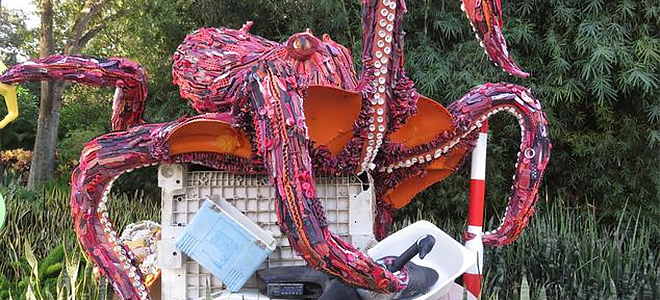
In fact, he thinks laughing about it may help us put an end to it
NRDC
by Jeff Turrentine
As strange as it may sound, thinking about global warming can make a lot of people feel frozen in place. Fear can be paralyzing—and there’s a lot of scary news out there.
Feeling anxious and overwhelmed isn’t a particularly helpful reaction, and it can spiral. We know that collective action is the only thing that can save us. But we also know that we’re not seeing collective action at the scale, speed, and intensity required. In the gap between these two understandings, concern can quickly turn into fear, and fear can just as quickly turn into a kind of incapacitating fatalism.
Environmental education specialist Patrick Chandler has given this unfortunate psychological trajectory a lot of thought. And he believes he may have found the key to breaking it: art.
Chandler is a Ph.D. student at the University of Colorado Boulder’s Center for Science and Technology Policy Research. His interest in the intersection of art and climate change dates back to his previous job in Alaska, where he coordinated the marine debris cleanup program at the Center for Alaskan Coastal Studies. Sensing that the talks he was giving at conferences year after year weren’t moving the needle, he partnered with the visual artist Angela Haseltine Pozzi, whose Washed Ashore project enlists artists to make dazzling—and achingly poignant—sculptures of marine animals, crafted from ocean pollution. Suddenly Chandler was able to get people’s attention. “I started to see that art could open doorways of communication and directly reach groups that we weren’t able to reach before.”
Since coming to Colorado, Chandler has been exploring the role that art—and especially collaborative, performative art—might have to play in deepening and expanding our climate change discourse.
Alongside a team of professors whose specialties range from theater to evolutionary biology, Chandler is part of an unusual project at the University of Colorado Boulder called Inside the Greenhouse, which uses drama, film, fine art, performance art, television, and other creative media to enhance people’s understanding of climate issues. Participating students collaborate on climate-themed projects, working closely together from conception to completion. That the finished pieces might convey powerful messages about our global predicament is only part of what interests Chandler. He’s actually just as interested in how the artistic process itself can affect the creators. In that process he sees a model for the kind of imaginative collaboration that’s necessary to tackle a complex issue like climate change.
“If you’re just looking at the data surrounding these huge environmental issues, you can fall into a sense of hopelessness,” Chandler says. “I see a lot of fear, grief, and frustration in students of all ages.” He says many who are struggling seem to have found an emotional outlet in the recent youth climate strikes and are especially inspired by the movement’s eloquently passionate organizer, Greta Thunberg. “You watch her speak and it’s just heart-wrenching—her deep sense of anguish about this issue. I think a lot of young people are there with her but don’t know where to go from there.”
Chandler believes the arts can help students work through their difficult-to-process feelings, which could then lead to action. “I’ve seen the evidence that it can,” he says. “And there’s something specifically important about people engaging in creative work together.”
Some of that evidence can be found in the scholarly publication Comedy Studies—no joke, it’s real—a peer-reviewed academic journal that, in its editors’ words, “reflects the increasingly cross-disciplinary and international nature of studies into comedy and documents exciting and innovative research into this hitherto under-represented field.” With two of his Inside the Greenhouse colleagues, professors Beth Osnes and Maxwell Boykoff, Chandler coauthored a recent paper outlining the communication-boosting effect of a climate-focused sketch comedy workshop. In the workshop, students who described themselves as both aware of and worried about global warming were asked to collaborate on climate-themed comedy skits, which they would then perform in front of a live audience. (Sample skit: A family takes their beloved grandmother, who just happens to be a refrigerator, to Rocky Mountain National Park for one last family vacation before properly and responsibly disposing of her via a government-sponsored household appliance recycling program.)
The researchers hypothesized that by “bringing positive humor into conversations about climate,” students could learn to “regulate their emotions, grow as climate communicators, and—critically—be sustained in their affective communication of climate solutions.” Surveys collected at the project’s conclusion bore that hypothesis out: 83 percent of the students reported that the workshop’s “experience of joy and/or fun” had strengthened their ability to sustain their commitment to action, and 90 percent reported that it had increased feelings of hope. When asked if the workshop had improved their abilities as climate communicators, 93 percent of the students self-reported that it had.
During the workshop, as the students honed their comedic and performative skills, “you could feel that shift from fear about the performance to confidence about it,” Chandler says. Linking climate action to performative art is important, he believes, because performance “has inherent action to it. When it comes to climate change, so many people don’t know what to do or how to act.” Creating a play or skit about it, however, “puts them in a space of movement; it ends that feeling of being stuck because they physically have to get into it. Would I take any of these plays to Broadway? No. But are they deeply meaningful to the students who are involved and to the audiences that see them? Yes, because they’re done in a way that’s engaging and joyful, that helps us all sustain hope, and that enables collective action to follow.”
Scientists, lawyers, activists, and policymakers are key players in the fight against climate change. To this list, Chandler says, we must add the artists, and even the comedians, whose vision and energy open our eyes to existing realities and open our minds to possible solutions. Or as he puts it: “We’re going to need creative people if we’re going to re-create the world.”



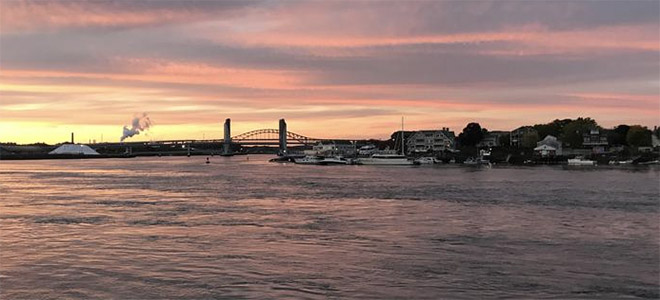
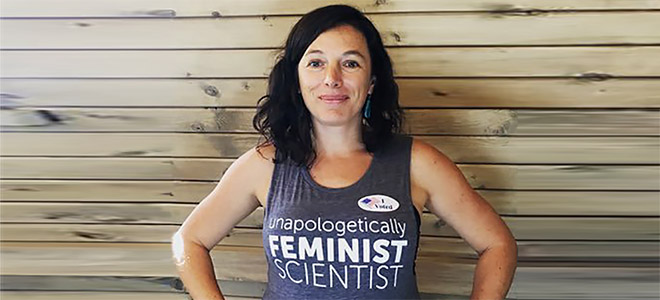
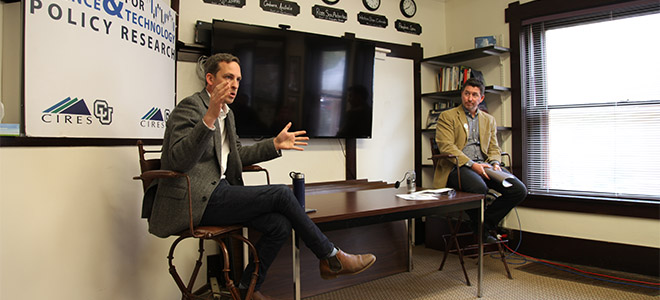
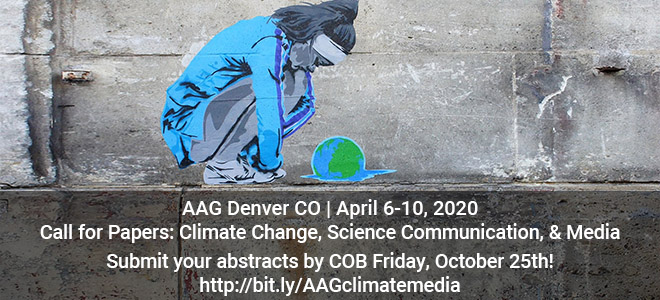
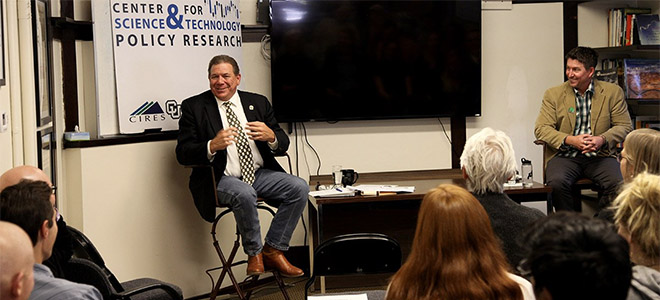
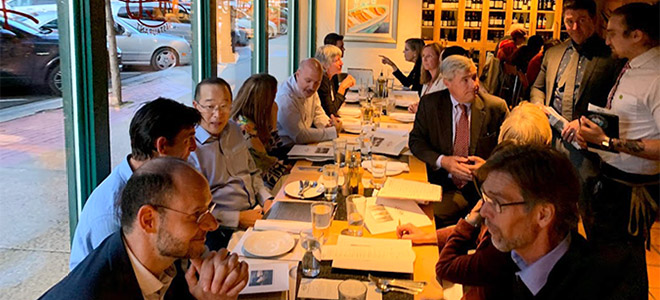
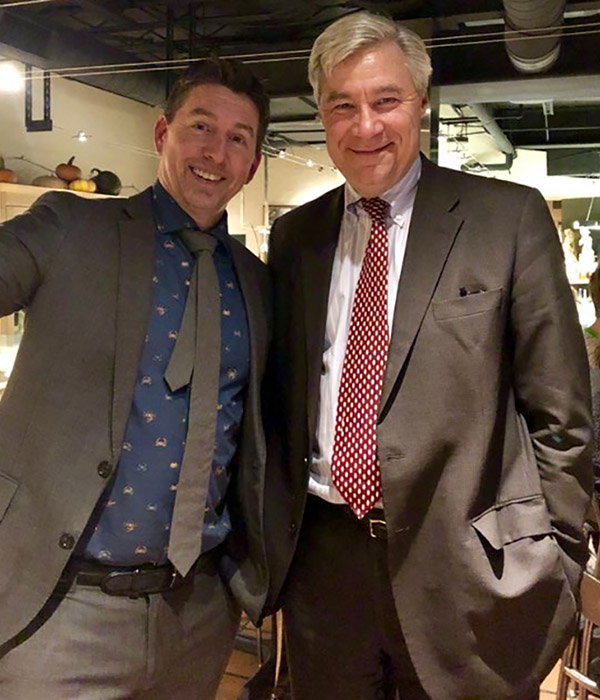


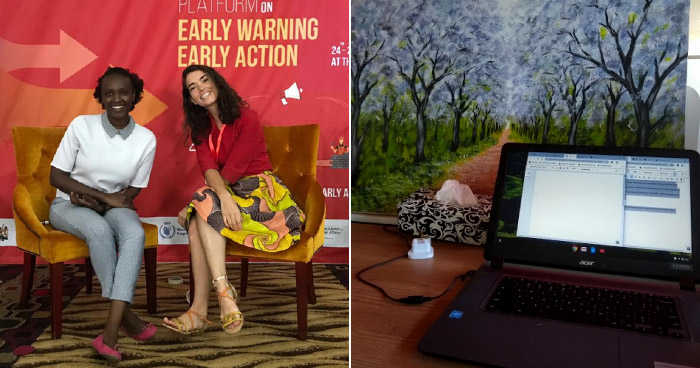

Drawdown, Act Up!
Youth Performance for Communicating Drawdown Solutions to Climate Change at the Drawdown Learn Conference
by Beth Osnes
CSTPR Faculty Affiliate and Associate Professor of Theatre and Environmental Studies at the University of Colorado
“What did the scientist say to the 1950s refrigerator?” “Are you Freon Friday night?” That joke wouldn’t land with a lot of crowds, but at the Drawdown Learn Conference, that groaner got a hearty laugh. This play on words was prompted by research conducted by Project Drawdown stating that refrigerant management is the top solution for reversing global warming.
Facilitated for youth performers, this joke was part of a ten-minute musical comedy performance, Drawdown, Act Up, featured during the plenary Saturday night Expo/party on October 20, 2019. Inside the Greenhouse was invited to present a workshop at the Drawdown Learn Conference for performance-based spectacle as a method for youth engagement. Our session shared field-tested methods for embodied youth engagement. The process is time-efficient and encourages creative participation. The joy experienced through the creative process carries over to the audience and can sustain commitment to climate action. Framing the performance was a giant Moving Mural, the pieces of which provided the transitions between songs and skits and, when brought together, revealed a final culminating message. This design gained inspiration from Stephen Duncombe’s open-source book Dream, “Ethical spectacle demands a different sort of participation. The people who participate in the performance of the spectacle must also contribute to its construction…popular participation not only can happen but must happen for the spectacle to come to fruition.”
At the conference, we also launched our new Inside the Greenhouse open educational resource, Drawdown, Act Up! for creatively engaging students in communicating Drawdown solutions. Our research on this project shows that the use of ‘good-natured’ comedy and fun helps young people process negative emotions regarding global warming, feeds hope, and sustains commitment to climate action. Additionally, embodying concepts is beneficial to learners. Each of the activities included is linked to a PDF of a ‘grab and go’ lesson plan that is classroom-tested, ready for easy implementation in the classroom or informal learning environment.
Co-director of Inside the Greenhouse Beth Osnes, Associate Professor for Theatre and Environmental Studies at CU was joined at the conference by CU students Sarah Fahmy (Theatre PhD), Lianna Nixon (Education MA), Patrick Chandler (Environmental Studies PhD), and Emmet Norris (Geology BA).